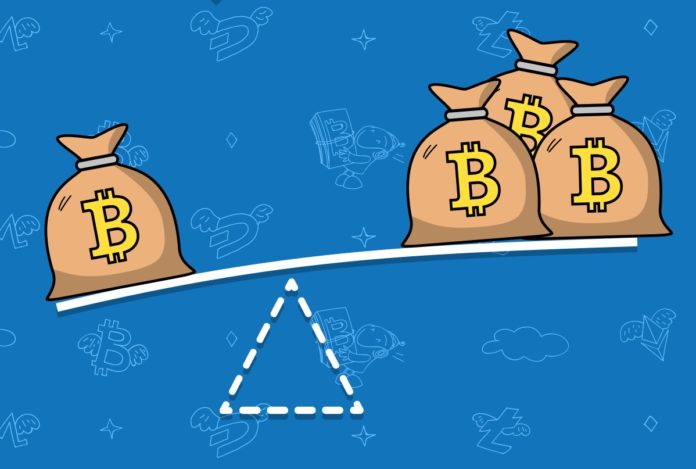Margin Trading 101: What is Margin Trading and How Can It Amplify Gains and Losses?
Jack Choros
Content Marketing
Taking on greater risk for the potential of earning a greater reward is what margin trading is all about. In a broad sense, the appeal of margin trading is actually what’s driving the lending and derivative revolution within the decentralized finance space.
But margin trading isn’t unique to the world of cryptocurrencies. It’s not something invented by a blockchain developer. The concept of margin trading has been around for decades and has its roots in the traditional financial world. In order to understand how trading on margin can amplify both your gains or losses, it’s important to define exactly what margin trading is.
In this post, you’ll learn the advantages and disadvantages of margin trading, and how to use it to your advantage in the crypto world. Welcome to margin trading 101!

What Is Margin Trading?
The word margin within the context of investing is essentially a synonym for the word loan. When the average person thinks about taking out a loan, they probably think of it in the context of trying to have something now and pay for it later. That’s how all loans work of course. But most people taking out a loan or applying for any form of credit for that matter aren’t necessarily doing it to increase their net worth. They’re doing it to pay for college, a car, an emergency expense, or even just a much-needed vacation. That’s what most Canadians do.
In fact, according to Equifax Canada, the average Canadian is more than $23,000 in debt. That figure doesn’t include paying off the mortgage on a home. Paying off a home is one thing. Once the mortgage is paid off, you get to keep the real estate, which is an asset that raises your net worth. Most other forms of debt will lower your net worth.
If there is such a thing as a good kind of debt, margin trading is meant to increase your net worth. It allows you to invest more money without a credit check for the opportunity to amplify your gains. That said, if you borrow money to invest and the value of your investment decreases, you’ll lose more than just your principal. You’ll end up owing money.
Margin trading has its roots in the stock market and is a very common tool investors use to their advantage. Nowadays it’s possible to do the same thing in the crypto world.
Let’s look at a brief example to illustrate the impact, both positive and negative, a margin trade can have on your crypto portfolio.
Two Ways to Use Margin Trading with Bitcoin
Let’s say you want to buy $10,000 worth of Bitcoin, but you only have $5,000 of your own money to invest. You borrow the other $5,000 from your crypto exchange of choice (that allows this) and buy your Bitcoin. Pretend the price appreciates to $11,000. You’ve made 10% on your $10,000 investment just like that! If you think about it, that means you earned 20% on your $5,000 loan. You effectively earned twice as much Bitcoin just for making a savvy short-term decision.
In return for your crypto exchange giving you the loan, they take a percentage. Even if they take 1% or 2% in a day, you’re earning just under $1000 worth of Bitcoin in a market where Bitcoin’s price can fluctuate significantly in a matter of hours. Learn how to do this over and over again and you can compound your gains at warp speed.
By the way – executing a margin trade hoping that the price of Bitcoin will go up is called ‘going long’ on Bitcoin.
But what if you think the price of Bitcoin will go down? Can you use margin trading to increase your crypto holdings in a bearish market? Totally! Using a margin trade to try to profit off of a decrease in Bitcoin’s Price is what’s known as short-selling.
While you don’t necessarily need to trade on margin to earn a return on Bitcoin when the price is going up, you always have to borrow when you are trying to short sell Bitcoin. That’s because in short selling, you’re effectively buying the right to purchase Bitcoin from a crypto exchange at a price lower than the current market value. The crypto exchange charges you an interest rate because the exchange is essentially giving you a loan. Once the price drops, you cover your short position by purchasing Bitcoin at the lower price, and you get to keep the difference in the price drop as your profit.

Why Using Margin Trading to Go Short Is Riskier Than Going Long
Even for the most progressive of investors, short-selling an investment is a risky proposition. Think about it logically. If you’re thinking Bitcoin will go up 10% tomorrow and you’re wrong, what is the worst thing that can happen? The worst thing that can happen is the price goes all the way down to zero. You would lose 100% of your investment, a percentage of the money you borrowed for the margin trade, plus any interest you owe.
The good news is, Bitcoin will never be worth less than zero, so even though losing big on a margin trade would certainly hurt your crypto wallet, you can survive as long as you practice proper risk management.
On the other hand, short-selling can be much more costly if you’re wrong. Let’s say that you think Bitcoin will go down to zero because you found a fatal flaw in its coding structure. You hold onto your position for a while thinking that you’re about to cash in big as the market crashes only to see the price skyrocket to $50,000 Canadian. Bitcoin is now worth five times more than what you thought it would be. You are now down 500% on your trade.
If the crypto exchange lending you the money allows this to happen, you would owe several times your principal investment plus interest. To avoid this, your margin trade would likely be liquidated using a margin call. That would save you from losing the shirt off your back, but you’d still be losing big.

Avoid a Margin Call By Maintaining Equity in Your Account
Most brokers in the stock market and crypto exchanges that offer margin trading will expect you to meet a threshold of 50% equity in your account in order to borrow money on margin. This means that if you have $50,000 in Bitcoin and you want to borrow more, you could essentially borrow up to $50,000 on top of that and own $100,000 worth of Bitcoin. That sounds great doesn’t it?
However, most exchanges have a house margin requirement of 30%. This means if you’re hoping Bitcoin goes up and it actually ends up dropping by 20%, you’re now playing with fire. The crypto exchange you’re using will begin to liquidate your position because they need your equity as collateral to cover your losses. As much as it may seem very friendly of your exchange to lend you such a large amount of money without a credit check, you’re ultimately the one that has to pay the cost to be the boss.
In the fast-moving world of crypto investing, you could put in a margin trade for $100,000 worth of Bitcoin before you go to bed and wake up in the morning to see that your position has been liquidated and you’re out close to $30,000 just like that. The good news is there is a much safer way to increase the value of your crypto holdings using margin trading.
The Safest Way to Earn a Profit off of Bitcoin Margin Trading
In the fiat investing world, trading on margin means borrowing money from a broker. The interest rate is profit for them. While the same thing can be true with cryptocurrency exchanges, some will actually let you be the lender. This means you don’t have to worry about maintaining 50% equity in your account, and you don’t have to worry about having a position liquidated when the price of Bitcoin suddenly spikes.
Lending out your capital for a margin trade is one of the easiest ways to turn a guaranteed profit. The crypto exchange makes sure that the borrower has enough equity to enter into their desired trade, takes care of everything should the borrower’s position need to be liquidated, and shares the profit with you.
The downside of earning a profit as a lender to a margin trader is that your return is much smaller than it would be if you were the one making the trade. Such is the life of a progressive investor. If you’re willing to take a big risk, you can get rewarded handsomely. If your risk tolerance is lower, your gains will be lower too. That’s true in any market, crypto or otherwise. At least now you know a little bit more about margin trading.
If you think margin trading might be a good strategy for you, start by purchasing Bitcoin from a cryptocurrency exchange in Canada. Netcoins offers you the ability to buy Bitcoin, Ethereum and a handful of other cryptocurrencies in Canadian dollars (or U.S. dollars) using Interac e-transfers, online bill payments or wire transfers. Get started today.
If you’re looking to purchase Bitcoin or other cryptocurrencies, buy Bitcoin with Netcoins. Netcoins is a fully regulated crypto trading platform in Canada. Create an account, fund it with an e-Transfer (other funding options available), and head to the trade page to buy or sell bitcoin. Netcoins is a fully regulated, publicly owned crypto trading platform.
*Note: Borrowing money for margin trades carries with it a significant risk of loss. Only risk what you can afford to lose.
Thanks for reading. For more blogs on all things in Bitcoin, you can read more here.
Written by: Jack Choros
Writer, content marketing at Netcoins.